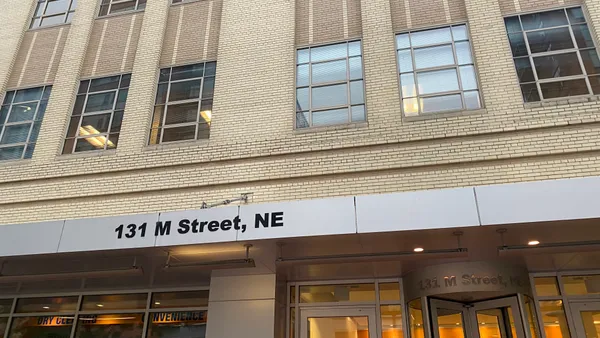Jonathan A. Segal is partner and managing principal and Adam D. Brown is special counsel at Duane Morris. Views are the authors’ own.
In its June 2023 decision Students for Fair Admissions v. Harvard University (SFFA), the United States Supreme Court effectively prohibited the affirmative use of race as a “plus” factor in student admissions by both private and public academic institutions under Title VII and the Equal Protection Clause, respectively.
As a legal matter, the Supreme Court decision does not change the law relative to workplace diversity, equity, and inclusion (DEI). Both prior and subsequent to the decision, it has been unlawful for employers to consider race, gender, or another Title VII characteristic as a “plus” factor even where the goal is to increase diversity, although there are exceptions to this.
However, there is another case pending before the Supreme Court that may restrict further what employers lawfully can do to increase diversity. Before discussing the case, we need to provide some legal background.

Title VII makes it illegal to, among other things, “discriminate against any individual with respect to his compensation, terms, conditions, or privileges of employment, because of such individual’s race, color, religion, sex, or national origin.” The question becomes what are terms, conditions, and privileges of employment?
Courts have long read into Title VII’s prohibition on discrimination a requirement that the employee asserting a claim show that he or she experienced an “adverse employment action.” That term does not appear in the statute and is entirely a creation of the courts.
What is an “adverse employment action?” It depends on what federal circuit you are in and what that circuit’s court of appeals has most recently said on the subject.

Over the years, courts have established their own idiosyncratic standards for how courts should make this determination. For example, in the 2nd Circuit, an adverse employment action is one that results in a “materially adverse change” to an employee’s terms, conditions, or privileges of employment. In the 3rd Circuit, the change must be “serious and tangible.” In the 7th Circuit there must be a “quantitative or qualitative change.” And in the 9th Circuit, a “material change” is sufficient.
These standards serve to screen out claims based on minor slights and annoyances that employees may experience at work.
Lately, however, the courts have begun reexamining the plain text of Title VII and, in some cases, rejecting their own judicially created tests. In just the last three years, the 6th, D.C. and 5th Circuits have modified their standards to eliminate those extratextual requirements.
In 2021, the 6th Circuit called into question prior case law requiring that an employment action be “materially adverse” to qualify as illegally discriminatory under Title VII.
In 2022, the D.C. Circuit did away with its requirement that an employee show “objectively tangible harm” resulting from alleged discrimination.
Most recently, in an August 2023 decision, the 5th Circuit overruled decades-old precedent requiring that any alleged adverse employment action be an “ultimate employment decision” such as hiring, firing or promotion.
The rationale for these decisions is that Title VII, by its terms, does not require any additional showing beyond discrimination “with respect to . . . compensation, terms, conditions, or privileges of employment.”
The day after the Supreme Court issued its ruling in the SFFA case, it granted certiorari in a case from the 8th Circuit, Muldrow v. City of St. Louis. In Muldrow, the 8th Circuit held that a police officer’s transfer to another division, with no change to pay, rank or status, was not an adverse employment action. Although the transfer altered some of the officer’s responsibilities and her schedule, the court reasoned it did not result in a “tangible change in working conditions that produces a material employment disadvantage,” as required by that circuit’s precedent.
The Supreme Court has granted certiorari to review the 8th Circuit decision. Sometime next June, the Supreme Court will determine if a discriminatory action is unlawful only if it causes “materially significant disadvantages” to those who are harmed by it, as the 8th Circuit has held, or if it’s sufficient for a plaintiff to plead that he or she was harmed by a discriminatory term, condition or privilege of employment, without pleading and then proving some heightened level of harm.
As has been true in other recent Court decisions, such as Groff v. DeJoy, involving a religious accommodation claim, a consensus among the justices may emerge in Muldrow for multiple distinct reasons. Some justices may see the current barriers to establishing an adverse employment action as contrary to the public policy objectives of Title VII. Other justices may simply view the issue as a textual matter: Title VII’s express terms do not say that claims should be so limited, so neither should the courts.
If the Court lowers the standard for an adverse employment action, how will this affect DEI? A wide range of DEI initiatives will carry with them greater legal risk.
For example, let’s assume an employer limits mentoring, coaching or training, among a number of other professional development opportunities, to applicants or employees of a particular gender or race or other factor.
Even now, without the Supreme Court having weighed in on this issue, any measure by an employer that limits access to these coaching and other programs based on a Title VII-protected characteristic creates some legal risk. That risk will only increase if the Supreme Court, as we anticipate, jettisons any requirement of alleging and proving a higher level of harm.
But not every discriminatory act can be unlawful. Courts have acknowledged that harm must be greater than de minimis for alleged discrimination to be actionable, but it is not entirely clear what will surmount the de minimis bar in an individual case.
At bottom, what the law requires for there to be a cognizable claim is that the plaintiff suffered some form of injury, which is part of what gives a person standing to invoke the power of the courts under Article III of the United States Constitution. Ultimately, therefore, courts may find a framework for what makes an injury more than de minimis in Article III jurisprudence. Unfortunately, that framework, too, could end up varying from circuit to circuit.
As a practical matter, employers are well advised to identify all programs and/or practices that have exclusions based on a protected characteristic. Employers either should eliminate the exclusions or modify them so that they are not based on gender, race or other protected characteristics.
Issue update
While this article was being prepared for publication, the 2nd Circuit issued another decision bearing on this issue, one that implicitly acknowledged the ongoing evolution of the legal standard for an adverse employment action, but bucked the trend of doing away with any requirement that an employee show a heightened level of harm to establish bias with regard to “terms, conditions and privileges of employment.”
The plaintiff in that matter had experienced an involuntary delay in returning to work after medical leave and then was reassigned to a different position, changing her responsibilities but not her compensation or benefits. Noting that its existing precedent requires that an alleged adverse employment action be “more disruptive than a mere inconvenience or an alteration of job responsibilities,” the 2nd Circuit held that the actions at issue met that standard.
In so holding, the court cited in passing to the D.C. Circuit and 6th Circuits’ recently lowered standards, but did not otherwise entertain the concept of allowing claims to proceed without a showing of economic or other harm beyond the alleged discrimination itself, instead recognizing only that noneconomic harm can sometimes qualify as more than an inconvenience or alteration of responsibilities and thus be materially adverse. Such decisions, like those discussed above, will be a subject of the Supreme Court’s analysis in Muldrow, and employers will need to keep a close eye on how the Court addresses this growing rift among circuits.













